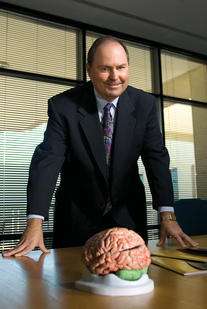Making decisions is the third way we learn, research shows

Experts have long believed there are two main ways our brains work: cognition, which is thinking or processing information, and affect, which is feeling or emotion. However, a new breakthrough was just made in regard to a third faculty of the brain: conation.
“When people make ‘gut’ decisions or choices based on instinct, that’s really conation,” says Pierre Balthazard, associate professor in the W. P. Carey School of Business at Arizona State University, who worked on the new research. “Conation has always taken a back seat to the other two faculties of the brain, but we were able to discover some key things about how it works.”
Balthazard recently analyzed the brains of more than 100 healthy people and found evidence they were all operating in the area of conation. Moreover, the findings indicate that people can be trained to compensate for strengths and weaknesses in conation, so their brains keep functioning efficiently, even in stressful situations.
Balthazard already was well-known for doing research in the area of how to map the brain for leadership qualities, using advanced techniques to analyze brain signals. His research is funded by the U.S. Department of Defense. In this case, he also worked with a world-renowned expert in the field of conation, Kathy Kolbe of the Phoenix-based Kolbe Corp., who has been assessing behaviors related to conation for 30 years. She created the basis for the new study, using data from a half-million people who completed her widely used Kolbe A Index.
“My theory was that conation is the one human factor that’s equal among all people; we all start with instinct, but it’s how we use it that gives us our unique character,” she said. “You can manage your response to a situation, but ultimately, you do that based on various strengths hard-wired into your brain. That’s exactly what our research found.”
Balthazard tested Kolbe’s theory by having subjects perform simple tasks. For example, he got a group of mostly high-level executives together at a table with several common objects on it, such as pencils and paper clips. He asked the participants to take one minute to rank the objects in order of importance. People’s strengths and weaknesses in the area of conation determined whether they easily performed the task or whether they found it very daunting and stressful. Balthazard could tell from brain-mapping the subjects beforehand exactly which ones would react in each way.
“We can demonstrate conative stress naturally occurring in business environments, too,” Balthazard said. “What’s important is to be able to identify people’s strengths and weaknesses in this area to help them compensate for various situations, so they aren’t wasting brain power and can keep functioning in an optimal way.”

















